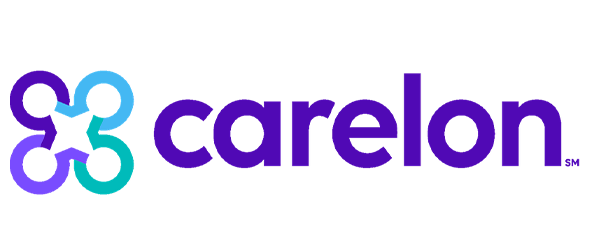When we think of drug addiction, we likely think of drugs like heroin and meth; illegal, dangerous and incredibly addictive which certainly do pose a public health crisis. However, there is another growing epidemic in our midst: Oxymorphone. Use of which can lead to oxymorphone addiction and opioid addiction more broadly.
Stop here if you’ve heard about the dangers of Oxymorphone addiction before
If you’re struggling with opioid addiction generally (or oxymorphone addiction in particular), you need to get help. And you need to get help today. At Tampa Bay Recovery, we have the opioid addiction and oxymorphone addiction treatment specialists that you need to get the help that you need, as soon as you can. Opioid abuse is extremely dangerous and risky. If you’re struggling, pick up the phone, click here, or give us a call today. Your life matters. So get the help you need.
What is Oxymorphone?
Oxymorphone is a prescription opioid used to manage moderate to severe pain; it is particularly prescribed when other opioid treatments have been ineffective. Like other opioids, it works by binding to the various opioid receptors in the brain, blocking pain signals in the central nervous system (CNS, for short). It is estimated that 10% of the population have abused opioids in their lifetime.
With effects similar to morphine, oxymorphone was first introduced as an injectable or rectal suppository in 1959. Today, it is available under the brand name Opana® or Opana® ER. Due to its high potential for abuse, the DEA classifies oxymorphone as a Schedule II controlled substance, similar to other prescription opioids.
How does Oxymorphone Addiction Start?
Oxymorphone abuse occurs when someone uses the drug without a prescription or in a way that deviates from the prescribed guidelines. Misusing oxymorphone, such as by taking higher doses than prescribed or using it without medical supervision, can quickly lead to physical dependence.
As the body becomes dependent on oxymorphone, users may develop intense cravings, which can often result in substance use disorder.
Individuals who abuse oxymorphone might consume it orally, crush and snort it, or dissolve it in water for intravenous injection. Snorting or injecting oxymorphone produces faster effects, but these methods also increase the risk of overdose.
Am I Addicted to Oxymorphone?
Symptoms of oxymorphone addiction are similar to those of other opioid use disorders. However, oxymorphone doesn’t produce the same euphoric effects as oxycodone (OxyContin, Percocet), hydrocodone (Vicodin, Norco), or heroin.
Signs of oxymorphone addiction include:
- Cravings for oxymorphone
- Misusing the prescription or taking the drug without one
- Doctor shopping to obtain multiple prescriptions
- Obsessing over acquiring or using oxymorphone
- Experiencing withdrawal symptoms when not using the drug
- Turning to other opioids if oxymorphone is unavailable
Oxymorphone Addiction and Oxymorphone Use Side Effects
Oxymorphone is a potent painkiller that causes chemical, neurological, and physiological changes in the body. Misuse of oxymorphone can lead to serious side effects.
In the short term, oxymorphone abuse may cause:
- Cognitive impairment
- Constipation
- Drowsiness
- Excessive sweating
- Nausea or vomiting
- Headache or dizziness
- Itching or skin rash
- Irregular heart rate
- Abdominal pain
- Changes in vision
- Pinpoint pupils
- Dry mouth (cottonmouth)
- Anxiety
- Hallucinations
Long-term oxymorphone abuse not only leads to dependence but also significantly increases the risk of addiction, overdose, and death. Other long-term side effects may include:
- Coordination problems
- Mood swings
- Headaches
- Irritability and agitation
- Low sex drive
- Trouble urinating
- Chronic constipation
- Difficulty concentrating
Oxymorphone Overdose
Recognizing the signs of an oxymorphone overdose is crucial in responding to this medical emergency. Symptoms of an oxymorphone overdose mirror those of other opioid overdoses and may include:
- Respiratory depression (difficulty breathing)
- Sedation
- Clammy skin
- Low blood pressure
- Vomiting
- Seizures
- Unconsciousness
If you suspect someone is experiencing an oxymorphone overdose, call 911 immediately. Stay with the person until help arrives, and if available, administer naloxone (Narcan) to help counteract the effects of the overdose.
Oxymorphone Detoxification after Oxymorphone addiction
The initial step in treating oxymorphone addiction typically involves entering a medical detox program like Tampa Bay Recovery Center. Detoxification provides a safe environment for individuals to stop using oxymorphone while under professional supervision.
During detox, the body naturally eliminates any remaining oxymorphone. As the body adjusts to the absence of the drug, patients may experience opioid withdrawal symptoms. Because opioid withdrawal can be painful and, in some cases, dangerous, the detox process is designed to prioritize safety while the body clears oxymorphone.
Common symptoms of oxymorphone withdrawal include:
- Abdominal cramps: Sharp or intense pain in the stomach area, often caused by the body’s adjustment to the absence of oxymorphone, making the digestive system more sensitive.
- Nausea: A queasy or uneasy feeling in the stomach that may lead to vomiting, commonly experienced during oxymorphone withdrawal as the body reacts to the lack of the drug.
- Panic and anxiety: Feelings of intense fear, worry, or unease, often overwhelming and accompanied by physical symptoms like a racing heart or shortness of breath, triggered by withdrawal from oxymorphone.
- Loss of appetite: A reduced desire to eat, which can occur as the body struggles with withdrawal, leading to a lack of interest in food and possible weight loss.
- Difficulty sleeping: Trouble falling or staying asleep, often caused by withdrawal-related discomfort, anxiety, and the body’s struggle to readjust without oxymorphone.
Some withdrawal symptoms, such as extreme dehydration or respiratory distress, can be life-threatening. Therefore, detoxing at a licensed facility specializing in opioid detox like Tampa Bay Recovery Center is strongly recommended.
Detox at Tampa Bay Recovery Center
At Tampa Bay Recovery Center, we know the importance of an effective detox program when you begin drug and alcohol addiction treatment. For some, the restrictions of an inpatient detox program are a barrier to treatment. We offer an outpatient detox program for this reason.
Contact us today to begin drug and alcohol detox in Tampa, Florida.






